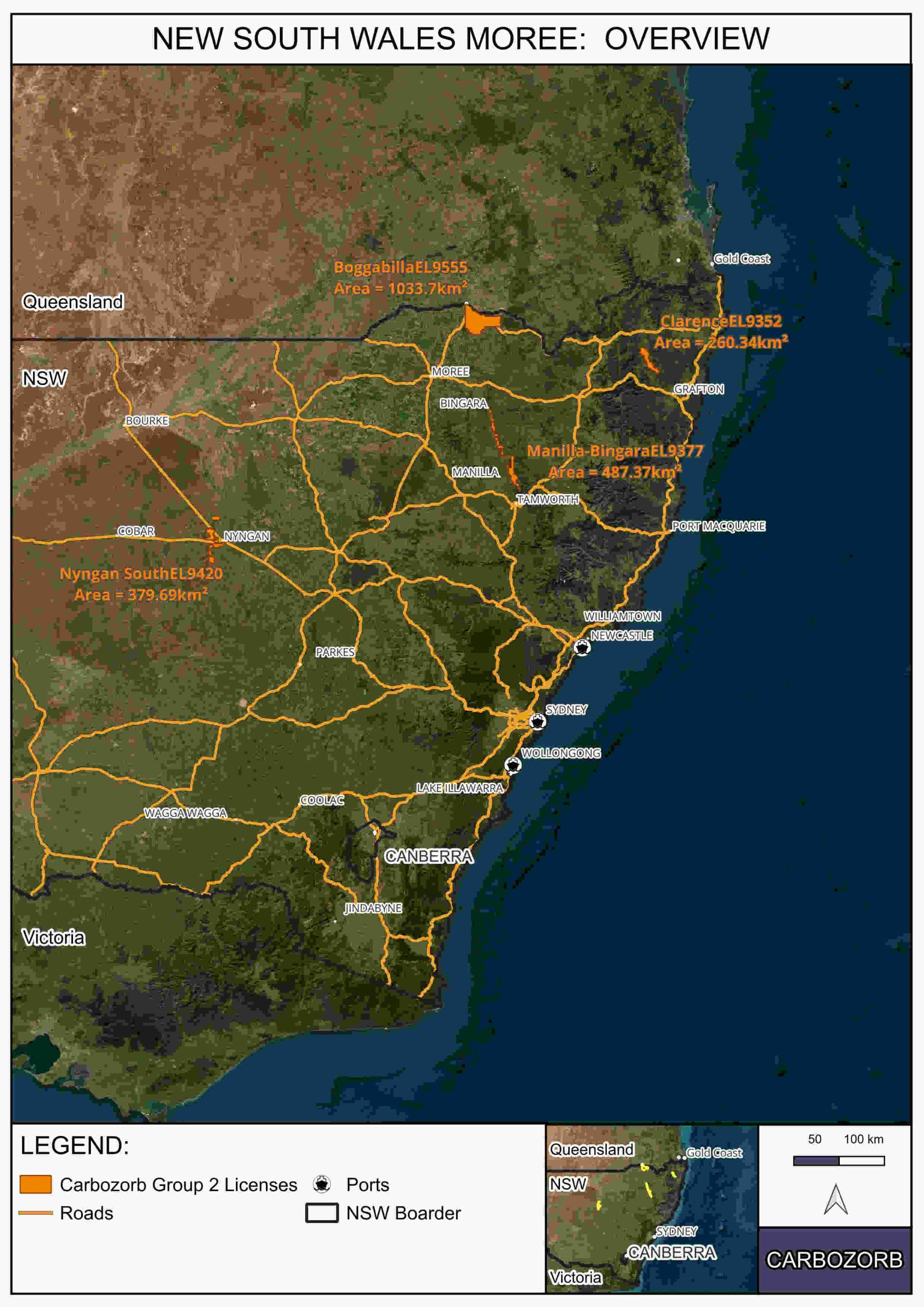Carbozorb Pty Ltd currently holds four Mineral Exploration Licences in inland New South Wales, encompassing a total area of 2,161 km2. These licenses cover areas over the Great Serpentine Belt which consists of magnesium-rich ultramafic rocks capable of reacting with CO2. Within the permit areas, we have identified both surface-level and buried serpentinite, making the areas suitable for either in situ or ex situ mineralisation, depending on the depth of the ultramafic rock.
As part of our operations, we are actively assessing potential sources of CO2 emissions close to the resource areas. Our aim is to either capture and mineralise the CO2 on-site or use direct air capture (DAC), as a source of CO2 for carbon mineralisation. The DAC process requires energy input, and we are evaluating the feasibility of utilizing solar power as a renewable energy source to power DAC.
We view the utilization of renewable energy for CO2 capture and mineralisation as a significant opportunity to generate carbon credits for Australian industries that emit CO2 and develop negative emission capacity.
The carbon mineralisation process also releases geologic hydrogen as a by-product of the chemical reaction. Carbozorb is analysing the potential of capturing this hydrogen so that it can be used as a green energy source.
